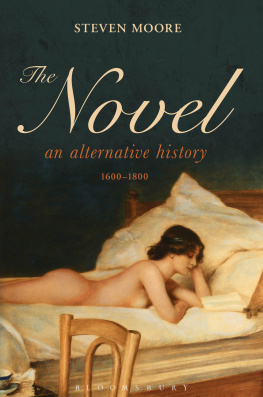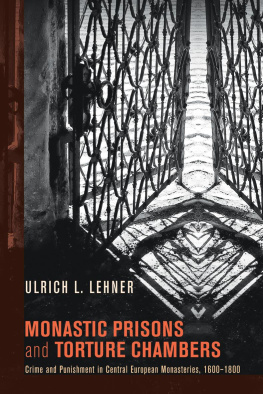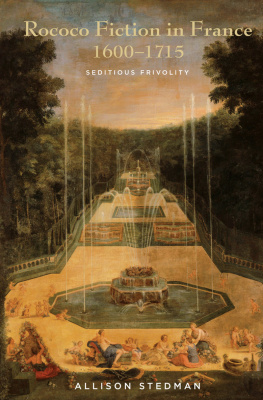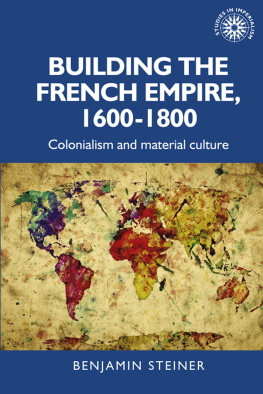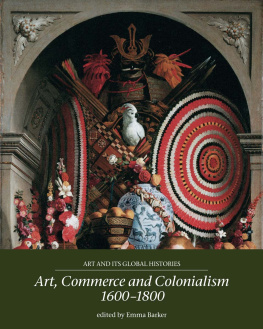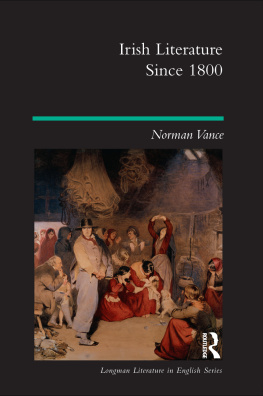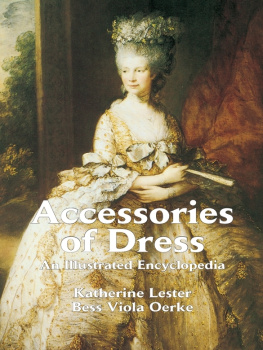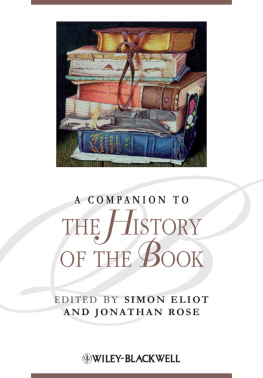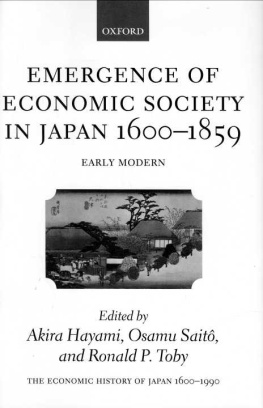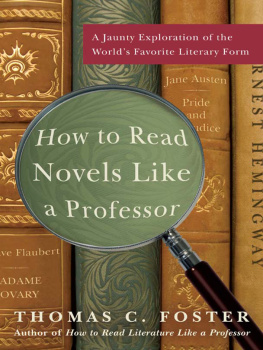THE NOVEL
An Alternative History
BOOKS BY STEVEN MOORE
A Readers Guide to William Gaddiss The Recognitions (1982)
William Gaddis (1989)
Ronald Firbank: An Annotated Bibliography of Secondary Materials (1996)
The Novel, An Alternative History: Beginnings to 1600 (2010)
BOOKS EDITED WITH AN INTRODUCTION BY STEVEN MOORE
In Recognition of William Gaddis (with John Kuehl, 1984)
The Vampire in Verse: An Anthology (1985)
Edward Dahlberg, Samuel Becketts Wake and Other Uncollected Prose (1989)
Ronald Firbank, Complete Short Stories (1990)
Ronald Firbank, Complete Plays (1994)
The Complete Fiction of W. M. Spackman (1997)
Beerspit Night and Cursing: The Correspondence of Charles Bukowski and Sheri Martinelli (2001)
Chandler Brossard, Over the Rainbow? Hardly (2005)
The Letters of William Gaddis (2013)
THE NOVEL
An Alternative History
1600 to 1800
STEVEN MOORE

Bloomsbury Academic
An imprint of Bloomsbury Publishing Plc
| 1385 Broadway | 50 Bedford Square |
| New York | London |
| NY 10018 | WC1B 3DP |
| USA | UK |
www.bloomsbury.com
First published 2013
Bloomsbury is a registered trade mark of Bloomsbury Publishing Plc
Steven Moore, 2013
All rights reserved. No part of this publication may be reproduced or transmitted in any form or by any means, electronic or mechanical, including photocopying, recording, or any information storage or retrieval system, without prior permission in writing from the publishers.
No responsibility for loss caused to any individual or organization acting on or refraining from action as a result of the material in this publication can be accepted by Bloomsbury Academic or the author.
ePub ISBN: 978-1-6235-6740-8
Library of Congress Cataloging-in-Publication Data
Moore, Steven, 1951
The novel: an alternative history, 16001800/Steven Moore.
pages cm
Includes bibliographical references and index.
ISBN 978-1-4411-8869-4 (hardcover: alk. paper) 1. FictionHistory and criticism. I. Title.
PN3451.M67 2013
809.3dc23
2013007972
Typeset by Deanta Global Publishing Services, Chennai, India
Contents
Yet once again, ye Muses! once again
Saddle the Hyppogryf! and wing my way
Where regions of romance their charms display.
Wielands Oberon
Since this volume picks up where the previous one left off, Ill ask the reader to refer to that volumes truculent introduction for my premises and methodology. For reasons explained there, I cast my net fairly wide into the ocean of story for the first volume and dragged in anything that remotely resembled a novel, but promised to tighten the net in the next volume. However, I decided it was too soon to focus only on unconventional, experimental novels, as I had planned. As Frank Zappa used to say, Without deviation (from the norm), progress is not possible, but In order for one to deviate successfully , one has to have at least a passing acquaintance with whatever norm one expects to deviate from (185). The novel settled into a norm during this early-modern period, and as a result, this volume examines more normal novels than the previous one did, all the better to contrast and appreciate the deviations from the norm.
Though this period did not witness the birth of the novel, as once believed, it did see an explosive growth spurt, both in the number of novels produced and the number of people who read them. Writers became more adventurous as they adapted this old genre to new uses, trying out new forms and genres, R&Ding new techniques, pushing the envelope of realism, and shifting the focus from public actions to private thoughts, from sociology to psychology. Thousands of novels were published during this period all around the world, yet I suspect most readers familiarity with pre-1800 European fiction is limited to Don Quixote, Candide, The Sorrows of Young Werther , maybe The Princess of Clves , Dangerous Liaisons , and/or Jacques the Fatalist , and the names, if not the works, of Rousseau and Sade. Even ones familiarity with pre-1800 English novels might be limited to a half-dozen classics ( Pilgrims Progress, Robinson Crusoe, Gullivers Travels, Pamela, Tom Jones, Tristram Shandy ). And forget about Oriental fiction. Separating the wheat from the chaff leaves hundreds of little-known novels that not only provide a context for those dozen or so classics, but are interesting in their own right and for their contributions to the art of the novel. So my history remains fairly comprehensive up until 1800, aside from a few countries (like Italy, Holland, and Russia) that produced too few original novels during this period to warrant inclusion.
By 1600 the novel was a familiar enough genre that I did not feel the need this time to haul in quasi novelistic narratives as I did in the previous volume. (Sorry, Epic of Mwindo ; another time, Nart Sagas from the Caucasus .) The novel is a protean genre that evades any critics confining definition, but this time I more often color inside the lines when it comes to classification. Novelist John Barth once suggested that Robert Burtons Anatomy of Melancholy (1621) could be considered a novel, and some Beckett critics have said the same about Ren Descartess Discourse on the Method (1637), but by the 17th century the novel was a sufficiently recognized genre that these authors could have tweaked their books to fit that category, had they so desired. So while not necessarily disagreeing with these ingenious reclassifications, I wont be including such works. My elastic definition of the novel the same as Websters : a book-length work of fiction stretches wide enough to include some works not usually classified as novels, but not as many as last time.
Regarding nomenclature: Ill be using terms of nationality in their broadest senses. In chapter 4 on the English novel, for example, English includes all inhabitants of the British Isles who wrote in English, whether they hailed from England, Ireland, Wales, Scotland, or the Isle of Man. Similarly, when I write of German novelists, I mean those who wrote in German, regardless of whether they lived in Bavaria, Prussia, Saxony, Austria, or Schaumberg-Lippe. Novelists are sorted by the language they wrote in, so the Swiss Rousseau and the Italian Casanova are both included in the chapter on the French novel, and those who, for reasons of their own, wrote in Latin get their own partition at the terminus of cap. I (as they might put it). Though 16001800 is the announced date range, in the case of the Germans it was necessary to start a little earlier, and elsewhere I follow a few 18th-century novelists into the first decades of the 19th for reasons explained in the text. Throughout the book I have lightly modernized quotations from early-modern texts, but only what textual scholars call accidentals (spelling, punctuation, capitalization, italics, etc.), not substantives (the words themselves) meaning I modernize chirurgion to surgeon, but I dont change it to doctor or physician. Most of the modernizing involves the deletion of superfluous commas, which make older authors sound like they suffered from a speech impediment, or were easily winded. (Emily gave a last look to that splendid city, but her mind was then occupied by considering the probable events, that awaited her, in the scenes, to which she was removing, and with conjectures, concerning the motive of this sudden journey from Radcliffes Mysteries of Udolpho .) Back then, typesetters, not authors, decided how texts should be set, and most authors wanted their texts to follow standard practices of the day many were wayward spellers anyway and undoubtedly they would want them updated to follow the standard practices of our day, rather than look like fusty antiques. When contemporary publishers bring out a new translation of an early-modern novel like Candide , they dont spell and punctuate it per 18th-century practices, and I see no reason why English novels of that period should retain the cobwebs of outdated conventions, except in special cases where an author (like Sterne) deliberately flouts the conventions. As often as possible, I cite novels not by page number but by chapter number (or volume/chapter, or by letter number in epistolary novels) to facilitate reference to other editions and, in the case of translations, to the originals.
Next page
